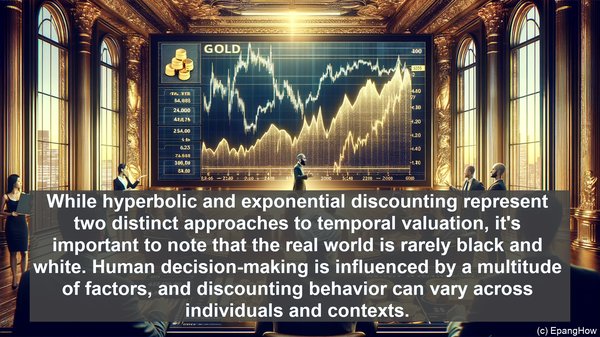Introduction: The Essence of Discounting
Discounting is a crucial concept in various fields, from economics to psychology. It involves assigning a lower value to future rewards or costs compared to their present counterparts. This temporal valuation is influenced by different factors, leading to the emergence of various discounting models. Two prominent ones are hyperbolic discounting and exponential discounting.
Hyperbolic Discounting: The Present Bias
Hyperbolic discounting is a model that suggests individuals tend to have a strong preference for immediate rewards over delayed ones. In this approach, the value assigned to a future outcome decreases rapidly as the time to its realization increases. This phenomenon is often referred to as the ‘present bias.’ Hyperbolic discounting is commonly observed in behavioral economics and has implications in decision-making, particularly in situations involving trade-offs between immediate gratification and long-term benefits.

Exponential Discounting: Consistency in Time Preference
In contrast to hyperbolic discounting, exponential discounting assumes a consistent time preference. According to this model, the value assigned to a future outcome decreases at a constant rate over time. Exponential discounting is widely used in economic analyses, such as cost-benefit evaluations, where a consistent discount rate is desired. It provides a straightforward and predictable approach to valuing future outcomes.
Real-World Implications: Saving, Investing, and More
The choice between hyperbolic and exponential discounting has significant implications in various real-world scenarios. For instance, in personal finance, individuals with a hyperbolic discounting tendency may struggle with saving for the future, as they are more inclined to prioritize immediate consumption. On the other hand, exponential discounting can aid in long-term financial planning, as it provides a systematic approach to evaluating the value of investments over time. Understanding these concepts can also be valuable in policy-making, where decisions often involve weighing short-term benefits against long-term consequences.

